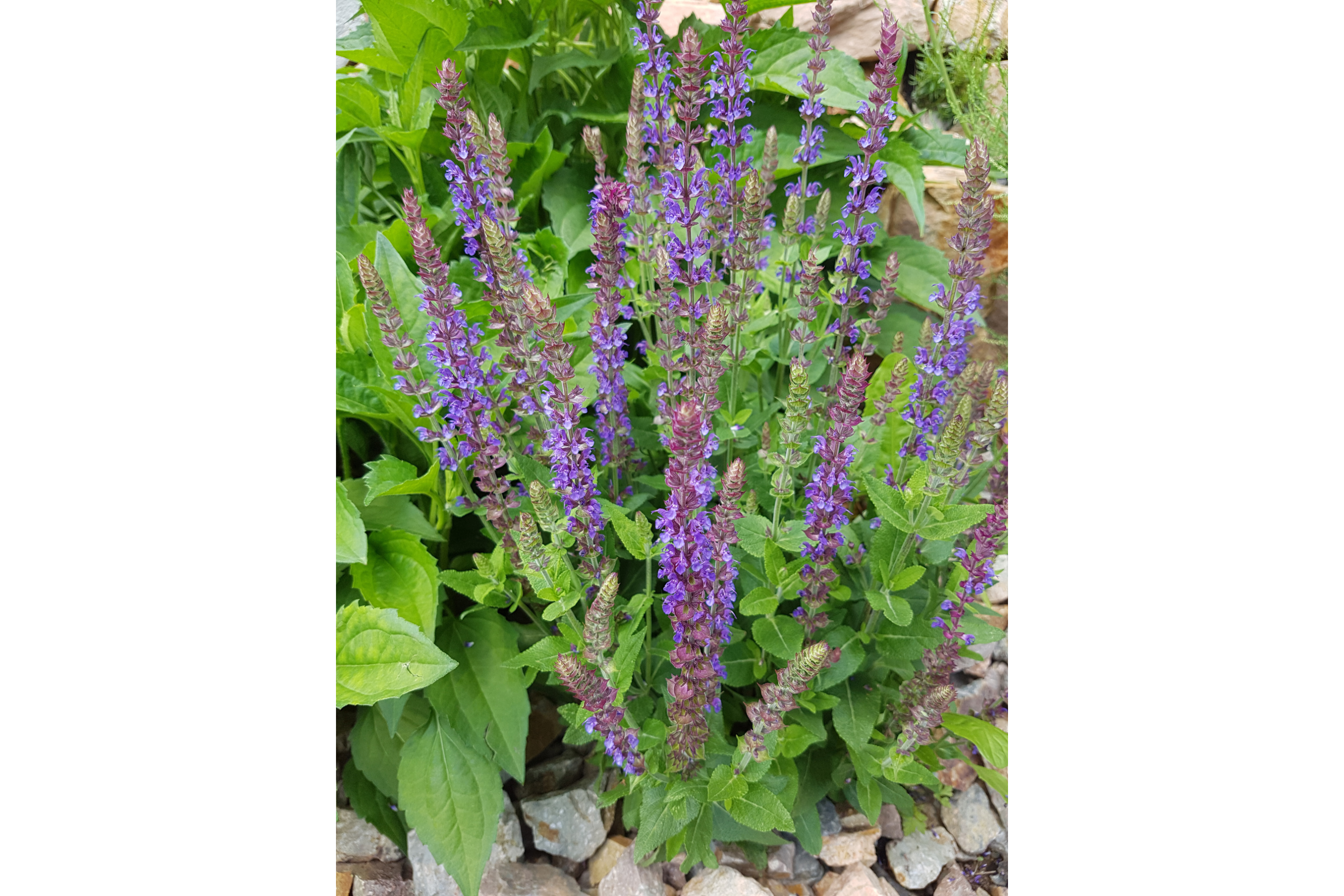"Woodland sage "
(Salvia nemorosa)

Description
Salvia nemorosa, the woodland sage, Balkan clary, blue sage or wild sage, is a hardy herbaceous perennial plant native to a wide area of central Europe and Western Asia. It is an attractive plant that is easy to grow and propagate, with the result that it has been passed around by gardeners for many years. Its wide distribution, long history, and the ease with which it hybridizes have resulted in many cultivars and hybrids—along with problems in clearly identifying the hybrids and their relationship with S. nemorosa. It was named and described by Carl Linnaeus in 1762, with nemorosa ("of woods") referring to its typical habitat in groves and woods. In northern Britain, Salvia nemorosa and Salvia pratensis are both in danger of disappearing due to depredation from slugs. e many inflorescences have closely spaced whorls of small flowers with brightly colored calyces. Leaves of Salvia nemorosa have been used in Turkish medicine to stop bleeding by applying externally. Diterpenes and triterpenes have been isolated from aerial parts of S. nemorosa: nemorone, nemorosin, horminone, 7-acetylhorminone, salvinemorol, megastigmane glycosides (salvionosides A, B and C), pachystazone, salvipisone, α-amyrin, ursolic and oleanolic acids, stigmast-7-en-3-one, 24-methylenecycloartanol, stigmast-4-en-3-one, β-sitosterol, stigmast-7-enol, as well as flavonoids salvigenin, eupatilin, apigenin and luteolin.
Taxonomic tree:







